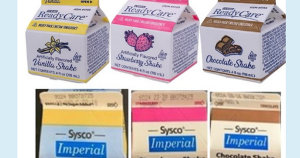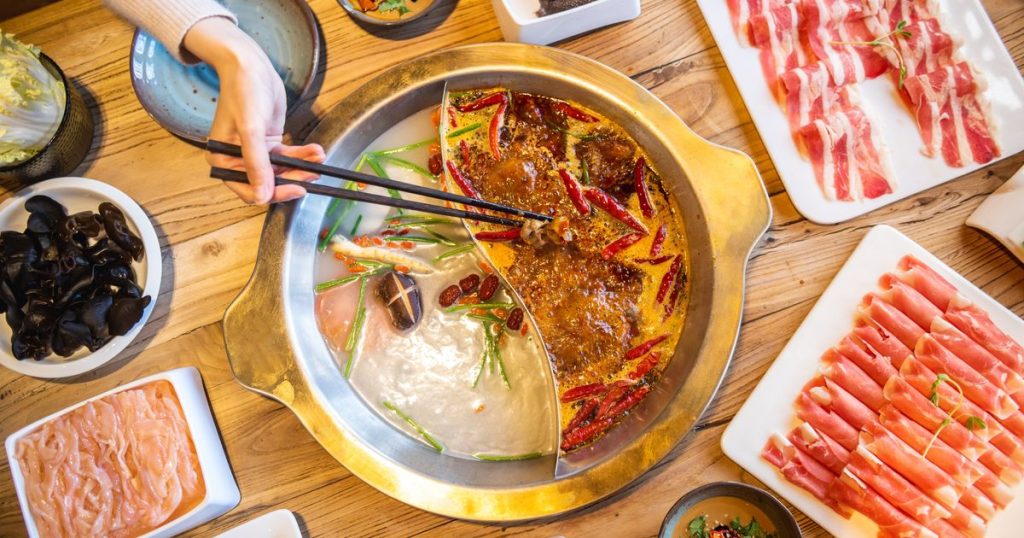The Ultimate Guide to Hot Pot: A Deliciously Social Dining Experience
What is Hot Pot, Anyway?
Hot pot is a vibrant, interactive dining experience that has captured the hearts—and taste buds—of people across Asia and beyond. At its core, hot pot is a communal meal where a steaming pot of broth is placed at the center of the table, and guests cook their own ingredients right in front of them. Think of it as a Chinese version of fondue, but with much more energy and excitement. Kenneth Wan, owner of Denver’s MAKfam restaurant, perfectly sums it up: “Hot pot is social, interactive, and delicious—a perfect recipe for fun.” Whether you’re a seasoned hot pot lover or a curious newcomer, this meal is sure to leave you wanting more.
Hot pot isn’t just about throwing food into a pot of boiling liquid. It’s an art form that combines flavor, variety, and camaraderie. The concept is simple: you’re given a pot of simmering broth, and you add your choice of ingredients—thinly sliced meats, fresh seafood, colorful vegetables, and more. As the meal progresses, the broth absorbs the flavors of the ingredients, creating a rich, complex base that’s just as delicious as the food itself. And don’t worry if you’re new to hot pot; the staff at most restaurants are happy to guide you through the process.
A Brief History of Hot Pot: A Tradition Spanning Millennia
Hot pot has a storied past that stretches back over 2,000 years. According to Tony Kwan, a food columnist for the Richmond News, the earliest forms of hot pot dining emerged during the Shang and Zhou dynasties, around 1600 to 256 B.C. Back then, people used metal cauldrons to cook their food in boiling water. The use of copper pots began during the Three Kingdoms period (220 to 280 A.D.), and the practice quickly became a staple of communal dining in many Asian cultures.
Jay Li, executive vice president of KPOT Korean Barbeque and Hot Pot, points out that hot pot is deeply rooted in Asian culinary traditions. “There are even stories of Mongolian soldiers using their bronze helmets as the first-ever hot pots,” he says. The enduring appeal of hot pot lies in its ability to bring people together. Whether it’s a family gathering or a lively party, hot pot creates an atmosphere of togetherness and shared joy.
How Hot Pot Works: A Step-by-Step Guide
So, how does a hot pot meal actually work? The process is straightforward but highly customizable, making it a fun and versatile dining experience.
First, you’ll typically have a burner at your table, either for an individual pot or a shared one. Some restaurants offer divided pots, allowing you to choose between multiple broths—say, a spicy Sichuan base on one side and a light, herbal broth on the other. Once the broth is simmering, you can start adding your ingredients.
Many hot pot restaurants operate on an all-you-can-eat model. You’ll order proteins like thinly sliced beef, pork, or lamb, as well as premium seafood such as shrimp or scallops, directly from the menu. Meanwhile, a buffet of vegetables, noodles, tofu, and other ingredients is usually available for you to grab and cook at your leisure. The beauty of hot pot is that you can tailor the meal to your preferences, whether that means loading up on spicy flavors or keeping things light and simple.
The Flavors and Fun of Hot Pot
One of the biggest misconceptions about hot pot is that the food is bland because it’s boiled. Nothing could be further from the truth. Hot pot offers a world of flavors, from the broth itself to the dipping sauces and the ingredients you cook. Many restaurants let you choose from a variety of broth bases, ranging from mild, savory options to intensely spicy ones. As you cook your ingredients, the broth absorbs their flavors, creating a delicious, layered taste that’s unique to your meal.
The interactive nature of hot pot is another reason it’s so beloved. “What I love most about hot pot are the variety of delicious ingredients and the social aspect of the experience,” says Joanne Liu, founder of Denver’s Mile High Asian Food Week. “It’s an interactive experience where you get to cook your own food right at the table.” The process of selecting ingredients, experimenting with dipping sauces, and enjoying the fruits of your labor makes hot pot a meal like no other.
Hot Pot Etiquette and Pro Tips for a Better Experience
While hot pot is meant to be a fun and laid-back meal, there are a few guidelines to keep in mind to ensure everyone at the table has a great time. First and foremost, be mindful of your fellow diners. If you’re sharing a pot, avoid dipping your chopsticks into the broth, as this can be unhygienic and rude. Instead, use the communal tongs or scoops provided to retrieve your food.
Another important tip is to pace yourself. Order enough food to enjoy, but don’t overload the pot—or your plate. Hot pot is usually all-you-can-eat, but it’s not a free-for-all. Only take what you can finish, and make sure to retrieve all your ingredients from the pot. Leaving food floating in the broth can be frustrating for others and may even damage the pot if items like noodles get stuck.
Speaking of noodles, many hot pot enthusiasts follow the “noodles last” rule. Eating veggies, seafood, and meats first allows you to enjoy the full range of flavors without filling up too quickly. Plus, noodles are more likely to soak up the flavorful broth at the end of the meal, making them an extra-special treat.
And don’t forget safety! When placing ingredients into the boiling broth, do so gently to avoid splashing hot liquid. Using the provided utensils can help prevent accidents and make the experience more enjoyable for everyone.
Hot Pot: The Ultimate Romantic Meal
Hot pot’s mix of intimacy, flavor, and fun makes it the perfect setting for a romantic evening. Kenneth Wan shares a charming story of how hot pot played a key role in his own love story. “I won my wife’s heart with some steaming hot pot magic,” he says. “She was obsessed with hot pot, and that’s how we connected. Now, it’s a staple of our life together.” The shared experience of cooking and enjoying a meal together creates a sense of closeness and connection that’s hard to find in a traditional restaurant setting.
Whether you’re on a first date or celebrating a milestone with your partner, hot pot offers a cozy, memorable experience. The interplay of flavors, the warmth of the simmering broth, and the joy of creating your own meal together make it an ideal choice for a romantic dinner. And who knows? You might just find yourself falling for the person across the pot—or, at the very least, falling in love with the magic of hot pot.
In the end, hot pot is more than just a meal—it’s an experience. It’s about connection, creativity, and the simple joy of sharing delicious food with the people you care about. So, gather your friends, your family, or that special someone, and dive into the world of hot pot. Your taste buds—and your social calendar—are in for a treat!















